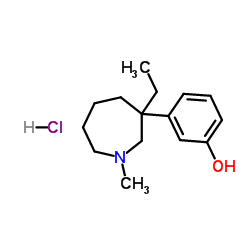Lack of sensitization during place conditioning in rats is consistent with the low abuse potential of tramadol.
Thomas M Tzschentke, Walter Bruckmann, Elmar Friderichs
文献索引:Neurosci. Lett. 329(1) , 25-8, (2002)
全文:HTML全文
摘要
Based on the recent finding that tramadol (TRAM) produces conditioned place preference (CPP) and dopamine release in the nucleus accumbens, it was suggested that the abuse liability of TRAM may be greater than hitherto assumed. We re-evaluated the effects of TRAM in CPP and behavioral sensitization, in comparison with morphine (MOR) and meptazinol (MEPT), an opioid drug with minimal abuse potential. While MOR produced CPP and very strong locomotor sensitization, TRAM and MEPT produced only CPP. It has been suggested that sensitization plays an important role in the development of addiction, hence our results suggest that the abuse potential of TRAM might resemble more that of MEPT than that of MOR, and they are consistent with the clinical picture, in that although TRAM is not completely devoid of positively reinforcing effects, reports on abuse are rare. The low propensity to induce addiction may be related to the lack of changes in the brain circuitry mediating reward and motivation, as evidenced by the lack of sensitization.Copyright 2002 Elsevier Science Ireland Ltd.
相关化合物
| 结构式 | 名称/CAS号 | 分子式 | 全部文献 |
|---|---|---|---|
 |
盐酸美普他酚
CAS:59263-76-2 |
C15H24ClNO |
|
Bis(9)-(-)-nor-meptazinol as a novel dual-binding AChEI pote...
2013-03-01 [Pharmacol. Biochem. Behav. 104 , 138-43, (2013)] |
|
Reflex activity caused by laryngoscopy and intubation is obt...
2007-01-01 [Eur. J. Anaesthesiol. 24(1) , 53-8, (2007)] |
|
Design, synthesis, and bioavailability evaluation of coumari...
2005-11-15 [Bioorg. Med. Chem. Lett. 15(22) , 4953-6, (2005)] |
|
Synthesis and relative bioavailability of meptazinol benzoyl...
2005-05-16 [Bioorg. Med. Chem. Lett. 15(10) , 2607-9, (2005)] |
|
Protection of acetylcholinesterase by meptazinol in mice exp...
1991-05-01 [J. Pharm. Pharmacol. 43(5) , 366-9, (1991)] |